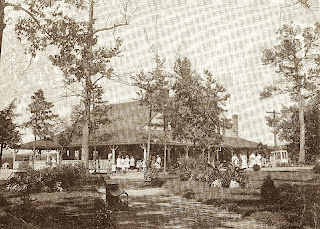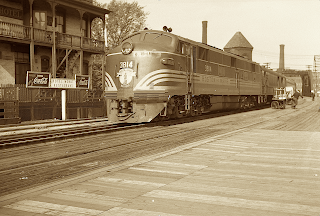Holyoke Archway Aqueduct
The Holyoke Archway Aqueduct was located next to the original Gatehouse near the dam on the Connecticut River.(this area can be seen from Pulaski Park's eastern most balcony.)
Built in the 1870s, it carried water to the city's first reservoir, which was located on the parcel of land that bordered Fountain Street to the north, Lyman Street to the south, High Street to the east and Maple Street to the west.
The reservoir supplied water to the city up until around 1873, after which in 1875, the site was filled in and construction began on one of Holyoke largest tenement buildings, the Dillon Block. Pulaski Heights and Kosciuszko Park now take up most of this area.
The aqueduct under construction in the 1870s. Notice this photo predates the Boston & Main Railroad hence the absence of the dual railroad tracks that ran parallel to the river. (Photo courtesy of F. Forest & Co.)
Built in the 1870s, it carried water to the city's first reservoir, which was located on the parcel of land that bordered Fountain Street to the north, Lyman Street to the south, High Street to the east and Maple Street to the west.
The reservoir supplied water to the city up until around 1873, after which in 1875, the site was filled in and construction began on one of Holyoke largest tenement buildings, the Dillon Block. Pulaski Heights and Kosciuszko Park now take up most of this area.


































dBRo0v313m!~~60_57.JPG)






TBQoqpvooSw~~60_57.jpg)








